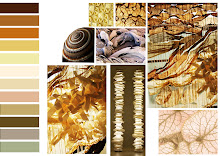fractals as they appear in nature in all arrangement
Fractals inherent in African culture
IN 1988, RON EGLASH was studying aerial photographs of a traditional
Tanzanian village when a strangely familiar pattern caught his eye.
The thatched-roof huts were organized in a geometric pattern of
circular clusters within circular clusters, an arrangement Eglash
recognized from his former days as a Silicon Valley computer engineer.
Stunned, Eglash digitized the images and fed the information into a
computer. The computer's calculations agreed with his intuition: He was
seeing fractals.
Since then, Eglash has documented the use of fractal geometry-the
geometry of similar shapes repeated on ever-shrinking scales-in
everything from hairstyles and architecture to artwork and religious
practices in African culture. The complicated designs and surprisingly
complex mathematical processes involved in their creation may force
researchers and historians to rethink their assumptions about
traditional African mathematics.
layout plan of an african village- is a perfect example of fractal
a video on talk by Ron Eglash on fractals in african village can be seen here

simple way of understanding how one unit can be replicated to create a whole structure
.jpg)
.jpg)

.jpg)










